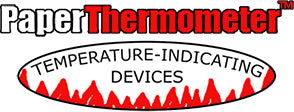Cleaning Melted Plastic From Heat Press Platens
Many screen printers who regularly print transfers using a heat press have goofed and put the transfer on ink side up. It makes a mess but is fairly straight forward to clean up. What do you do when you melt plastic on the platen? That can be a bit more difficult of an issue.

First check with your press manufacturer or in the instructions that came with your press. They will likely be the best source of information on any issue you have with the press including how to remove melted plastic from the platen.
Beware of using abrasives or scouring pads on platens. Some presses have platens that are coated with a non-stick coating. You want to avoid scratching or rubbing off this coating. Damage to your platen will effect the quality of your prints.
If you are going to try to scrape off the melted plastic, then make sure you are using a plastic or Teflon scraper. Avoid using metal or you will most likely damage your press platen.
One trick is to heat up your press before trying to remove the melted plastic. Then use a scraper or wipe with rags to get the now hot plastic off of the surface. Be very careful! Wear gloves that protect from heat. You have the potential to get seriously burned. Be safe.
Some people report good results using cleaning products intended for cleaning household steam irons for ironing clothing.
Of course, avoiding the issue in the future is the best thing you can do. A good way to do this is to use Teflon sheets to protect your platens. These are available from many suppliers for this purpose. Cleaning them is easy and you can toss them if the issue is really bad. You can also use a slip over lower platen cover to keep that platen clean. Some companies such as Stahls' Transfer Express make these covers which would be easy to clean or replace if needed.
You can avoid the issue all together by maintaining the correct temperature as recommended for the transfers and material you are using. The various plastic based fabrics will melt at different temperatures making it easy to get into trouble with melted plastic on your heat press. Don't press fabrics that cannot withstand the required heat. Use a Thermolabel temperature label to verify and correct platen temperature prior to pressing and avoid the issue of melted plastic on your heat press all together.
Temperature Labels for Screen Printing and Heat Press Transfers

First check with your press manufacturer or in the instructions that came with your press. They will likely be the best source of information on any issue you have with the press including how to remove melted plastic from the platen.
Beware of using abrasives or scouring pads on platens. Some presses have platens that are coated with a non-stick coating. You want to avoid scratching or rubbing off this coating. Damage to your platen will effect the quality of your prints.
If you are going to try to scrape off the melted plastic, then make sure you are using a plastic or Teflon scraper. Avoid using metal or you will most likely damage your press platen.
One trick is to heat up your press before trying to remove the melted plastic. Then use a scraper or wipe with rags to get the now hot plastic off of the surface. Be very careful! Wear gloves that protect from heat. You have the potential to get seriously burned. Be safe.
Some people report good results using cleaning products intended for cleaning household steam irons for ironing clothing.
Of course, avoiding the issue in the future is the best thing you can do. A good way to do this is to use Teflon sheets to protect your platens. These are available from many suppliers for this purpose. Cleaning them is easy and you can toss them if the issue is really bad. You can also use a slip over lower platen cover to keep that platen clean. Some companies such as Stahls' Transfer Express make these covers which would be easy to clean or replace if needed.
You can avoid the issue all together by maintaining the correct temperature as recommended for the transfers and material you are using. The various plastic based fabrics will melt at different temperatures making it easy to get into trouble with melted plastic on your heat press. Don't press fabrics that cannot withstand the required heat. Use a Thermolabel temperature label to verify and correct platen temperature prior to pressing and avoid the issue of melted plastic on your heat press all together.
Temperature Labels for Screen Printing and Heat Press Transfers
